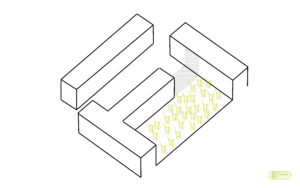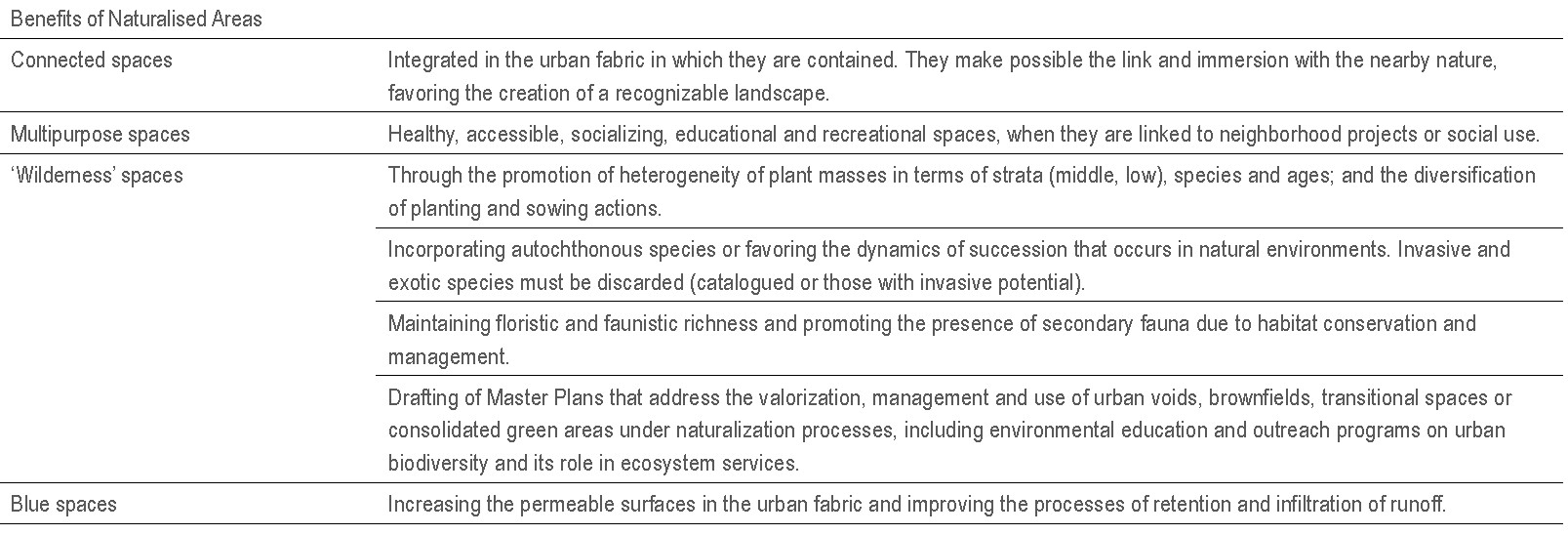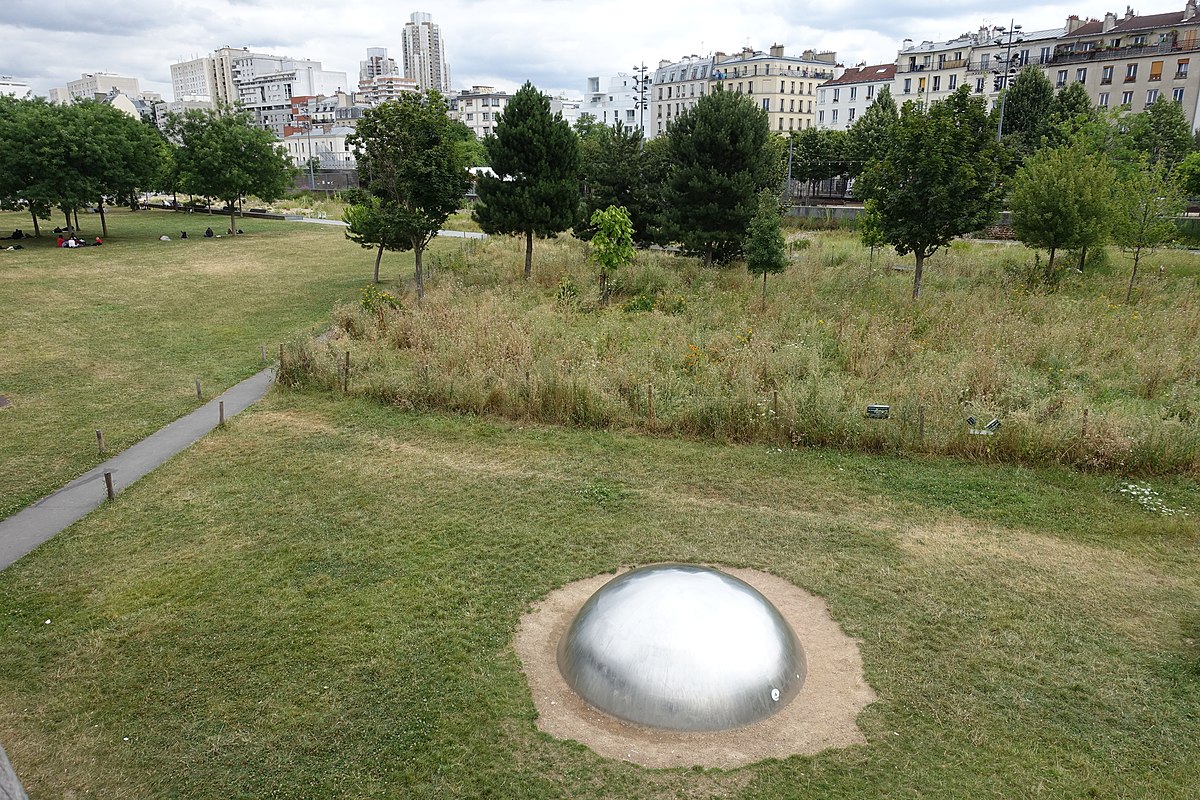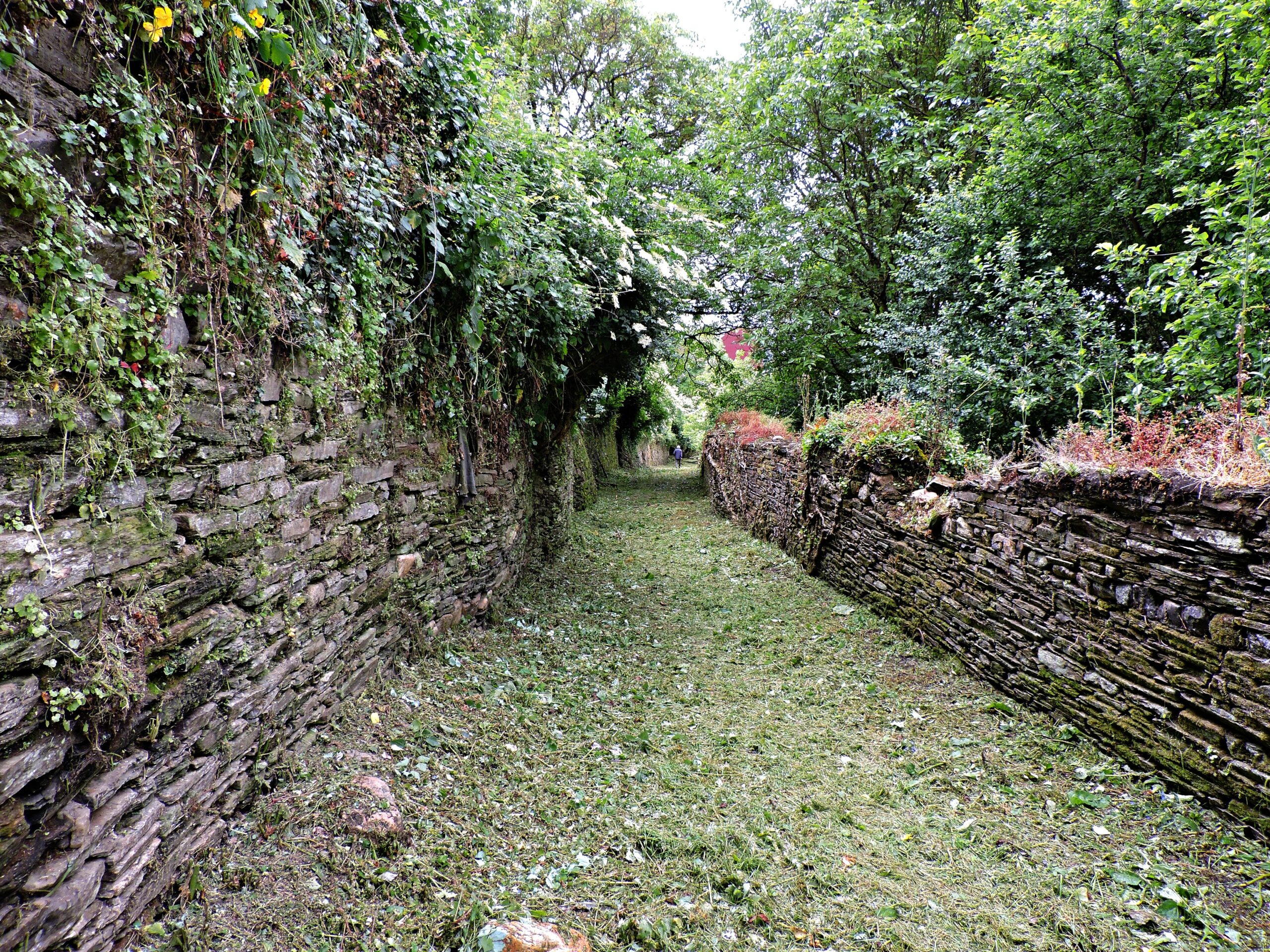EV05 URBAN GREENING
Intensive greening techniques

Aim
Creation of adapted urban green surfaces with minimum maintenance requirements through intensive greening techniques.
Why?
The urban greening consists of promoting natural spaces through the recovery of autochthonous flora and fauna, increasing biodiversity. In recent years, there has been greater concern about urban voids and their potential for ecological connectivity in urban green infrastructure. That is why – regardless of the scale – actions of urban nature are carried out for the introduction of plant material favouring the natural dynamics of colonisation of spontaneous vegetation. This situation is typical of brownfields or land that has undergone alterations that have removed the previous vegetation cover. The intended benefits of urban greening are:
► Urban landscape: Intensive greening areas may form part of urban voids, spaces in transition, even consolidated gardens subjected to greening processes (diversification of plant strata, increase in biodiversity, elimination of exotic species and incorporation of autochthonous species).
►Liveability of public spaces: Vegetation contributes to psychological well-being and reduces stress. The green surfaces that make up these spaces improve the visual quality of the areas in which they are inscribed.
►Ecological connectivity: The vegetation cover contributes to the creation of nodes (N) that can be connected through tree-lined streets (Connectors, C) or greenbelts (Core Elements, EN). The incorporation of this stratum favours the presence of insects.
►Water Cycle: The existence of vegetation is necessarily associated with the presence of permeable surfaces, causing infiltration and reducing runoff.
► Climate Change adaptation and mitigation: Vegetation captures CO2 through the photosynthetic process. It also contributes to the mitigation of Urban Heat Island (UHI) phenomenon by being an effective buffer and fixes pollutant particles.
► Social cohesion: The use of brownfields by neighborhood projects is usually accompanied by processes of space greening. They are spaces that complement consolidated green areas, contributing to the reduction of stress and the improvement of environmental quality; however, they do not have to be destined for social use.
► GREENING: It will consist of acting in spaces with an extension of less than 0.5 Ha, for this purpose it must have a support layer of vegetation (preferably topsoil) with a depth of not less than 15 cm.
Vegetation may be artificially incorporated by sowing (mixture of native seeds) and/or planting (individual specimens in alveolar containers), or by favoring the colonization of spontaneous vegetation on gravel beds (dry gardens), or directly on empty plots.
The selected species shall be autochthonous (adapted to climate, soil, low maintenance and integrated into ecosystem processes) and shall come from authorized nurseries, preferably from local production (in order to ensure genotypes and phenotypes).
The sowing procedure can be manual, with a seed drill or by hydroseeding, it will depend on the extension of the area to be intervened and the slope (hillside, banks). Plantings will be set up in irregular frames to provide a natural appearance. The recommended season is autumn, preferably, and spring.
► MAINTENANCE: it will be oriented to the consolidation of the vegetation (mainly the root system development) and, once established, different treatments will be established depending on the uses.
The main management objective is to define the frequency (1-2 times/year), height and mowing time. In abandoned plots, it will be oriented towards the management of existing spontaneous vegetation and/or the promotion of the planting of native species.

 Jardins d’Éole Paris (plan. 2007, Michel Corajoud)
Jardins d’Éole Paris (plan. 2007, Michel Corajoud)
 Abandoned agricultural area (advanced ecological succession, consolidated plant stratification) O Carme – Regueiro dos Hortos, Lugo (Spain)
Abandoned agricultural area (advanced ecological succession, consolidated plant stratification) O Carme – Regueiro dos Hortos, Lugo (Spain)
district SCALE INTERVENTION

ISSUES AFFECTED
SUITABLE TO BE COMBINED WITH OTHER SOLUTIONS
MEASURE METHOD
Indicator
(I1) CO2 Capture (CaCO2)
Unit
(I1) kg CO2 / year
Minimum goal
(I1) That corresponding to an exclusively herbaceous vegetation
cover (0.05 kg CO2/m²·year)
Desirable goal
(I1) That corresponding to the maximum possible development
within the process of plant succession.
Measurement method / Formula
(I1) CaCO2 (kg CO2·year) = [A x B]
A: m² of surface to be acted on
B: average capture value
(1 kg CO2/m²·year for woody plants; 0,05 kg CO2/m²·year for
herbaceous plants)
PLANNING LEVEL
Urban planning
Public space renovation plans
Reform of community spaces
people INVOLVED
Local government technicians
Regional/General administration technicians
Water and natural resource managers
Architecture and engineering teams
Associations and cooperatives
Neighborhood communities
POSIBLE ACTIONS DEVELOPED BY THE ADMINISTRATION :
• Specific master plan for each space within the framework of an Urban tree master plan coherent with the management and planning instruments of the Urban green infrastructure (UGI).
• Creation of a management body in partnership with the acting administration and the neighbourhood representative organisations.
• Plan for reuse of brownfields sites.
What should we consider for its implementation?
• The selection of the type of vegetation has to be adapted to the specific conditions of each space (efficiency, pollution capture, flexibility, resilience and adaptation, etc.)
• Over and underground functional requirements cannot be ignored (space, infrastructure and materials).
• The life of these projects must take into account the succession process. The maintenance will be continuous and constant, based on a deep knowledge of the species that are developed and the dynamics of colonisation and competition. If the period of service is long, it will be possible to achieve high levels of stratification. If it is short, management will be based on conservation of initial stages (predominance of perennial ruderal vegetation). User collaboration is fundamental in the conception of the projects and in the understanding of the formal and aesthetic results.
EXAMPLES
 Esquema de sucesión en espazos baleiros urbanos (‘brownfields’)
Esquema de sucesión en espazos baleiros urbanos (‘brownfields’)
















